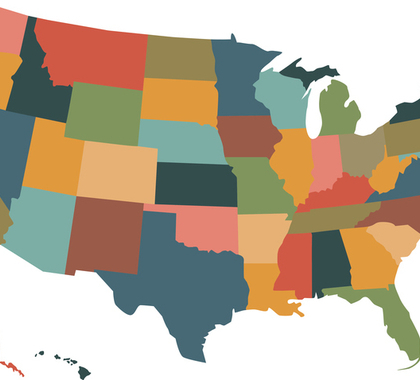Throughout the first 100 days of the Trump administration, policymakers in energy-producing states have seen many positive improvements emerging out of Washington, D.C. For example, the onerous Waters of the United States rule, Stream Protection Rule and the Clean Power Plan are all going away.
The Trump administration in many of its new executive orders has emphasized energy independence — an important, jobs-focused policy position that is well received in fly-over country.
Reining in ‘agenda’ policies
As the massive federal overreach imposed by the previous administration is rolled back, state policymakers, regulators and the energy industry must work together to balance prudent resource development with the task of protecting the environment.
Each state must deal with its own unique issues and impose policies that weigh the true costs and benefits of energy and environmental regulatory schemes.
The cost of dealing with the unending regulations implemented by the Environmental Protection Agency (EPA) and other agencies are paid by consumers through higher energy costs; by taxpayers, who ultimately subsidize environmental activists; and by companies and employees.
Each month, the director of mineral resources in North Dakota, Lynn Helms, releases his “Director’s Cut” report, which summarizes oil-and-gas-related activity. About two-thirds of the report is devoted to actions by federal agencies that impact my state and its energy sector. These regulations are a drag on North Dakota’s economy, and they offer few, if any, environmental benefits.
And North Dakota isn’t alone. States across the country have been dealing with the same problem for years, but now, the tides appear to have changed.
President Donald Trump is taking strong action to rein in agenda-driven environmental policies that are based on fake science, and that is a welcome and much-needed development. America is finally stepping in the right direction: toward energy and job security, unraveling red tape and unnecessary regulations, and strengthening the power grid.
But despite these dramatic improvements, many more problems need immediate attention.
We’ll always have Paris
A significant concern for state policymakers and the energy industry is the threat of lawsuits brought by environmental activist groups.
These well-funded groups know how to use the nation’s judicial system to get what they want. Many of them have openly declared war on the energy industry and denounced the actions taken by the Trump administration to lower energy prices and spur economic growth.
Many environmental groups have already begun to challenge some of Trump’s improvements in court. This puts policymakers in a bind as they work to develop and implement state-based energy and environmental policies, with the concern being the regulatory rollback will be stuck indefinitely in the slow-moving legal system. Specifically, EPA’s CO2 Endangerment Finding and the Paris Climate Agreement give environmental extremist groups much of the legal foundation they need to block commonsense regulatory reform at the state level.
Environmentalists are not happy with what is going on at EPA or in the federal government in general, but they remain comforted — at least, for now — by the fact they still have Paris.
A way forward
The federal government is out of control, and it is time to return the nation back to its original, constitutional governing model.
The states have spent the past decade fighting for their sovereignty from the bureaucrats in Washington, D.C. The Trump administration must do its part to restore federalism and states’ rights, and Congress must do its job as well, by supporting Trump’s vision for energy-producing states and by working to balance the budget and adhering to the Constitution’s limitations on federal power.
At the state level, lawmakers must step up and become the nation’s leaders in energy and environmental policy and development.
Those of us who live and raise our children in energy-producing states are serious about protecting our environment, but we must do so with a balanced approach that encourages prudent resource development and innovation.
State officials should build on the opportunities presented by the Trump administration and push Congress to enact permanent reforms to limit future administrations that may not be as energy-friendly. They should also continue to educate people in their states about the false promises made by supporters of renewable energy and the junk science behind the failed policies of the past — especially those imposed by the Obama administration.
Today, thanks to leadership changes in Washington, D.C., Americans have the opportunity to advance the country toward prosperity.
Together, we can become a nation with fewer regulatory burdens, a stronger economy, and more secure energy and agricultural industries. Let’s seize this chance while we still have it.
[Originally Published at the Washington Times]





